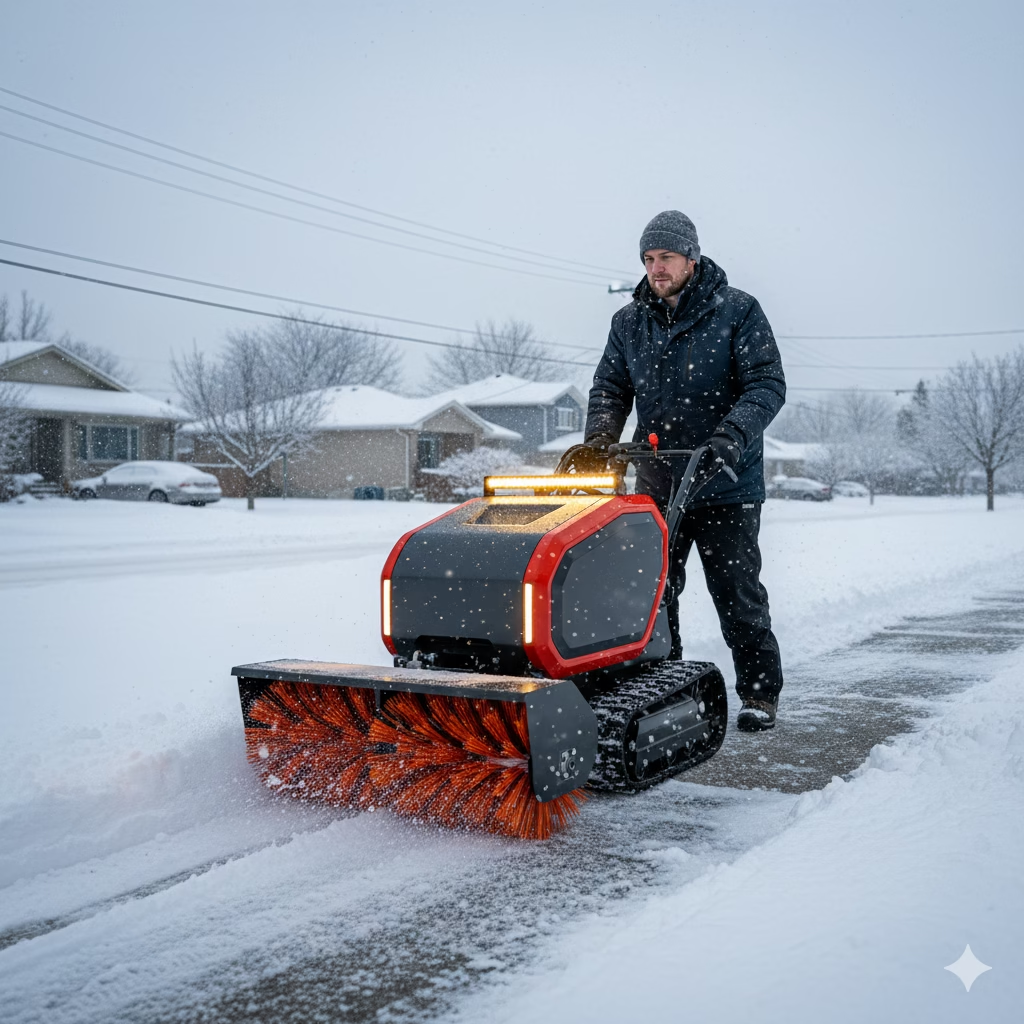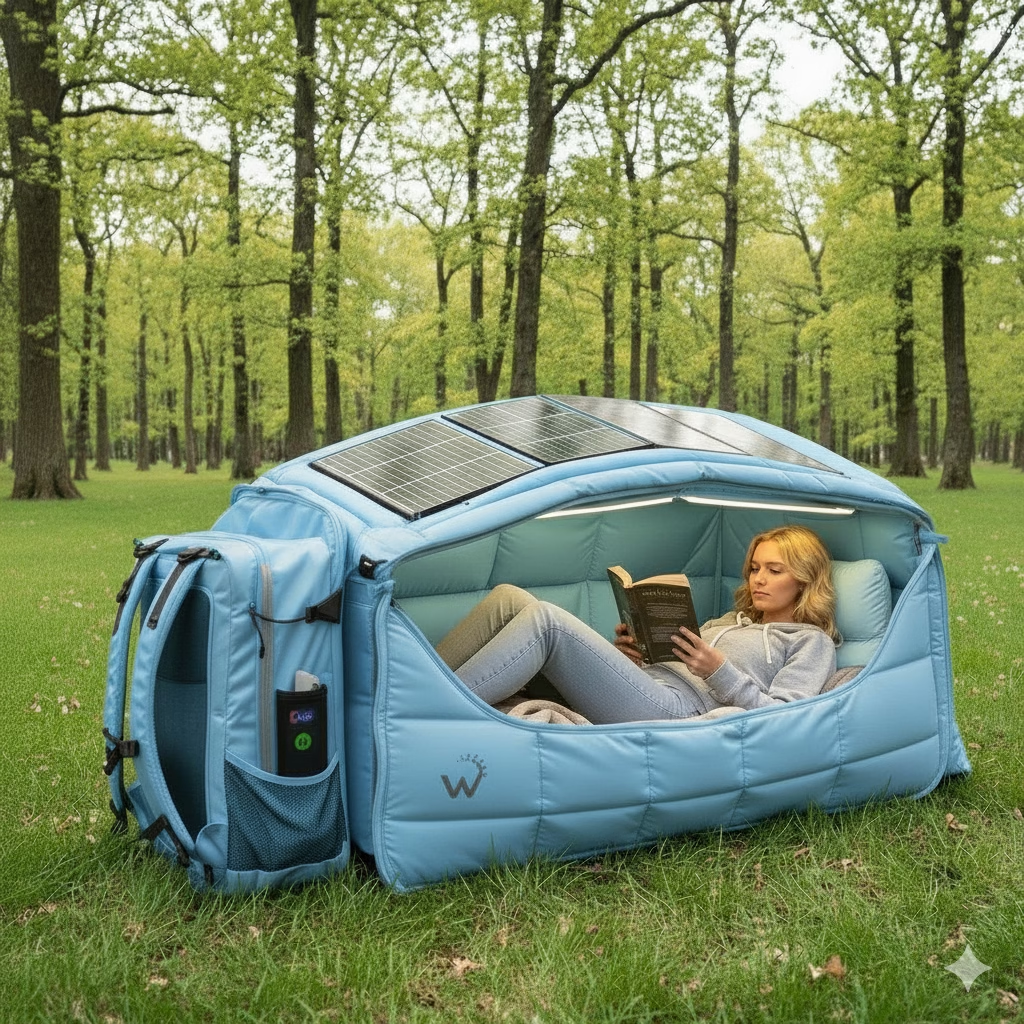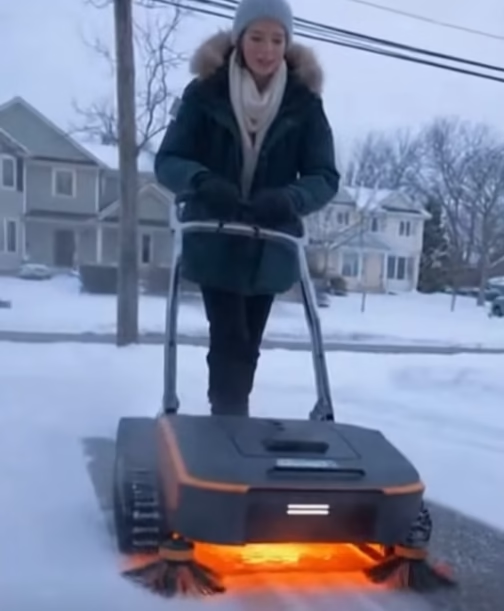When winter arrives, clearing snow becomes a daily challenge for homeowners, businesses, and city maintenance teams. Traditional snowblowers rely on mechanical augers, engines, and brute force to push or throw snow out of the way. But in recent years, a new innovation has emerged—the Heat Snowblower, a revolutionary machine that uses thermal energy to melt, clear, and manage snow more efficiently.
This cutting-edge tool is gaining momentum worldwide, especially in regions with heavy snowfall. If you’re considering upgrading your winter equipment, this guide will explain what a Heat Snowblower is, how it works, its benefits, costs, and why it could become the next big trend in winter home care.
What Is a Heat Snowblower?
A Heat Snowblower is a next-generation snow removal machine designed to melt snow instantly using high-intensity heat elements instead of mechanically lifting or throwing it like traditional snowblowers.
Unlike regular machines that can clog, jam, or struggle with wet snow, heat-powered snowblowers use a combination of:
Electric heating coils
Infrared heating panels
Calibrated hot-air jets
Efficient thermal conduction plates
These components work together to liquify snow on contact, converting it to water that either drains away or refreezes as a thin, manageable layer of ice. The result is a cleaner pathway without the leftover snow piles.
How a Heat Snowblower Works
Although designs vary by manufacturer, most Heat Snowblowers follow a similar system:
1. Thermal Melting Zone
Powerful heating elements raise the temperature at the front of the machine, melting even thick layers of snow efficiently.
2. Water Management System
Melted snow is guided through side channels, minimizing puddles and preventing slush buildup.
3. Electric or Hybrid Motor
Most Heat Snowblowers use eco-friendly electric batteries or hybrid systems, making them quieter and easier to maintain.
4. Smart Temperature Control
Sensors adjust heat levels based on snow density, outside temperature, and the speed at which the machine is moving.
5. Anti-Freeze Safety Design
Heat Snowblowers include insulated components and frost-resistant housings to prevent any part from freezing during operation.
This combination transforms winter maintenance into a smoother, faster, and more enjoyable task.
Key Benefits of Using a Heat Snowblower
✔ Efficient for Wet, Packed, or Heavy Snow
Traditional snowblowers struggle with wet or icy snow, but heated machines melt it effortlessly.
✔ No More Snow Piles
Since the Heat Snowblower melts snow instead of throwing it, you won’t need to deal with:
towering snowbanks by your driveway
piles blocking sidewalks
snow blown onto neighboring property
✔ Quiet and Eco-Friendly
Battery-powered models operate silently compared to gas engines, reducing noise pollution.
✔ Lower Maintenance
Without augers, belts, or mechanical throwing parts, Heat Snowblowers have fewer moving components to break.
✔ Cleaner and Safer Surfaces
Heated clearing results in smooth paths, reducing slip hazards for pedestrians.
Is a Heat Snowblower Safe to Use?
Absolutely. Modern models include:
Overheat protection
Auto shut-off sensors
Child-lock features
Thermal insulation around all heating elements
Cold-weather shock protection
Many Heat Snowblowers are tested to meet safety standards for both residential and commercial use.
Who Should Use a Heat Snowblower?
Homeowners
Perfect for driveways, paths, and sidewalks—especially if you live in a snow-heavy climate.
Business Owners
Retail shops, malls, and office buildings benefit from safer walkways and faster clearing.
Property Managers
Condominiums, resorts, hotels, and apartment complexes save time with large-area coverage.
Municipalities
Heat Snowblowers are ideal for clearing:
public sidewalks
bus stops
train platforms
pedestrian squares
Older Adults
The Heat Snowblower requires less physical force than pushing traditional models.
Heat Snowblower vs. Traditional Snowblower
| Feature | Heat Snowblower | Traditional Snowblower |
|---|---|---|
| Snow Removal Method | Melts snow using heat | Mechanically throws snow |
| Noise | Quiet | Loud (gas engines) |
| Maintenance | Low | High (belts, augers, oil changes) |
| Efficiency for Wet Snow | Excellent | Moderate to poor |
| Safety | Creates less residue | May leave uneven surfaces |
| Energy Source | Electric/Battery | Gas or electric |
| Snow Pile Creation | None | Yes, creates snowbanks |
Overall, the Heat Snowblower offers a more advanced, convenient approach to winter clearing.
How Much Does a Heat Snowblower Cost?
While prices vary based on brand and power, the typical cost range is:
Entry-level models: $350 – $600
Mid-range models: $700 – $1,200
Commercial-grade units: $1,500 – $3,000+
Although it may seem more expensive upfront, lower maintenance and fuel costs make it an excellent long-term investment.
Top Features to Look For When Buying a Heat Snowblower
If you’re buying one in 2025, consider the following essential features:
1. Battery Life or Power Output
Choose a model with long-lasting batteries or stable power supply for bigger areas.
2. Adjustable Heat Levels
Higher control = better performance in different snow conditions.
3. Waterproof and Cold-Proof Housing
Ensures durability in harsh winter environments.
4. LED Illumination
Helps with early-morning or nighttime clearing.
5. Wide Clearing Path
20–30 inches is ideal for efficient coverage.
6. Smart Sensor Technology
Prevents overheating and adjusts power usage automatically.
Why the Heat Snowblower Is the Future of Winter Maintenance
With advancing technology and increasing concerns about environmental impact, the Heat Snowblower represents a shift toward smarter, more energy-efficient snow removal. Users appreciate:
quiet operation
cleaner results
fewer mechanical failures
greater convenience for all ages
As winters become more unpredictable, the ability to melt snow safely and quickly makes this machine a must-have tool for modern homes and businesses.
Conclusion
The Heat Snowblower is more than a winter accessory—it’s a breakthrough in how we approach snow removal. Combining powerful heating technology, eco-friendly energy systems, smart sensors, and ultra-clean clearing results, it solves many of the problems traditional snowblowers struggle with.
If you’re ready to upgrade your winter equipment for 2025, a Heat Snowblower offers unmatched performance, convenience, and long-term value.
















